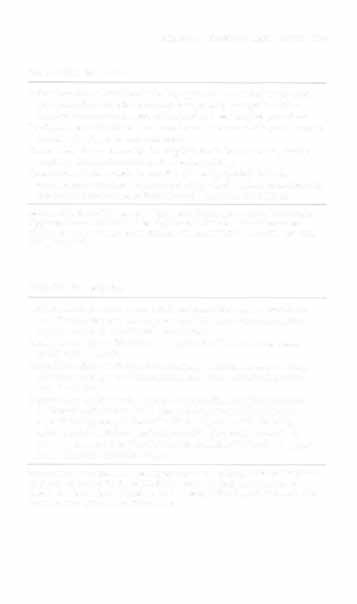i bc27f85be50b71b1 (266 page)
Read i bc27f85be50b71b1 Online
Authors: Unknown

848 ACLTfE. CARE HANDBOOK FOR PHYSICAL THERAPISTS
Table lV-B.A. Aminoglycosides (Ami-Infecrive Agems)
Indications: Used for shorr·term treatment of infections of susceptible bane·
ria, for suspected gram-negative infections, for staphylococcus infections
for which penicillin is contraindicated, as part of a multidrug treatment
regimen for Mycobacterium complex (common in patients with acq uired
immunodeficiency syndrome)
Mechanism of action: Inhibit protein synthesis in susceptible strains of gram·
negative bacteria and disrupts the functional integrity of bacterial cell
membrane
General side effects: Ototoxicity, confusion, depression, fever, nausea, vomiting,
diarrhea, leukopenia, electrolyte disturbances, palpitations, hyper· or
hypotension, thrombocytopenia, anemia, nephrotoxicity, hepatic toxicity
Generic name (trade name): Amikacin sulfate (Amikin), gentamicin (Garamy·
cin, Apogen), kanamycin (Kantrex), neomycin (Neo-Rx, Mycifradin),
tobramycin (Tobex, Tobi, Tobrex)
Sources: Data from AM Karch. lippincott'S Nursing Drug Guide. Philadelphia: Lippincott-Raven, 200 I ; 1 3; and Mosby's GenRX. The Complete Reference for Generic and Scand O,"gs. St. Loui" Mosby,1 999;85, 1030, 1 257, 1597, 2 1 56.
Table IV-B.B. Cephalosporins
Indications: Pharyngitis, tonsillitis, urinary tract infection, gonorrhea, septicemia, meningitis, bone and joint infections Mechanism of action: Inhibit synthesis of bacterial cell wall, resulting in cell
dearh
General side effects: Headache, dizziness, lethargy, nausea, vomiting,
diarrhea, bone marrow suppression (decreased white blood cells, red
blood cells, platelets), rash, fever, nephrotoxicity
Generic names (trade n ames)
First generation: Cefadroxil (Ultracef, Duricef), cefazolin (Ancef), cephalexin
(Kene", Kefler), cephapirin (Cefadyl), cephradine (Veiosef, Anspor)
Second generation: Cefac10r (Cedar), cefamandole (Mandol), cefoxirin
(Mefoxin), cefonicid (Monocid), ceforeran (Ceforan), cefprozil (Certil),
cefpodoxime (Vanrin), cefuroxime (Zinace£), loracarhef (Lora bid)
Third generation: Cefepime (Maxipime), cefixime (Suprax), cefoperazone
(Cefobid), cefotaxime (Claforan), cefrazidirne (Fortaz), ceftibuten (Cedax),
ceftizoxime (Ccfizox), cefrriaxone (Rocephin)
Sources: Data from AM Karch (cd). Lippincon's Nursing Drug Guide. Philadelphia:
Lippincott-Raven, 1 999;48; and Mosby's GenRX. The Complete Reference for
Generic and Brand Drugs (9th cd). St Louis: Mosby, 1999;360-430, 1 351.


APPENDIX IV: I'HARMACOLOGIC AGENTS
849
Table IV-S.C. Macrolides
Indications: Acute infections, including upper and lower respiratory tract
infections, skin and soft tissue infections, prophylaxis against alpha·
hemolytic streptococcal endocarditis in dental and surgical procedures
Mechanism of action: Bind to cell membranes and causes changes in protein
function, leading to bacteria cell death
General side effects: Reversible hearing loss, confusion, anorexia, diarrhea,
vomiting, edema, dermatitis, rash, burning, itching
Generic name (trade name): Amoxicillin (Amoxil), aspirin (Fiorinal),
chlorzoxazone (Para flex), dirithromycin (Dynabac), erythromycin (ilorycin),
lincomycin (Lincocin), tacrolimus (Prograf), troleandomycin (Tao)
Sources: Data from AM Karch (cd). Lippincott's Nursing Drug Guide. Philadelphia:
Lippincorr-Raven, 2001;40; and Mosby's GenRX. The Complete Reference for
Generic and Brand Drugs (9th ed). St Louis: Mosby, 1 999; 114, 164,473,726,8 1 4,
1 333,2079,2237.
Table I V-S.D. Penicillins
Indications: Moderate ro severe infections caused by sensitive organisms,
including streptococci, pneumococci, and staphylococci; also syphilis
and gonococcal infections and Lyme disease
Mechanism of action: Inhibit cell wall synthesis of sensitive organisms,
resulting in cell death
General side effects: Lethargy, hallucinations, gastritis, nausea, vomiting,
diarrhea, anemia, thrombocytopenia, leukopenia, rash, fever, proteinuria, hematuria
Generic name (trade name): Amoxicillin (Amoxil), ampicillin (Omnipen·
N, Toracillin-N), bacampicillin (Spectrobid), carbenicillin (Miostar),
cloxacillin (Tegopen), dicloxacillin (Pathocil), mezlocillin (Mezlin),
nafcillin (Nafcil, NalJpen, Unipen), oxacillin (Bactocill, Prosraphli n),
penicillin G, potassium (Pen-G, Penrids), penicillin V (V-cillin K), piper·
acillin (Pipracil), ticarcillin (Ticae)
Sources: D:Ha from AM Karch (ed). Lippincott's Nursing Drug Guide. Philadelphia:
Lippincott-Raven, 2001 ;48; and Mosby's GcnRX. The Complete Reference for
Generic and Brand Drugs (9th ed). St. Louis: Mosby, 1999;1 14, 1 28,21 1,342,553,
669, 1 495, 1566, 1 676,1 726,1779,21 38.





850 AClffE CARE HANDBOOK FOR I 'HYSICAL THERAI'ISTS
Table 1V-8.E. Sulfonamides
Indica tions: Ulcerative colitis, Crohn's disease, otitis, conjunctivitis, meningitis, toxoplasmosis, urinary tract infections, rheumatoid arthritis, collagenous colitis Mechanism of action: Anragonize para-aminobenzoic acid, which is essencial
for folic acid synthesis, causing cell death in gram-negative and grampositive bacteria
General side effects: Headache, peripheral neuropathy, ataxia, convulsions,
vertigo, drowsiness, nausea, diarrhea, anorexia, impaired folic acid
absorption, thrombocytopenia, crystalluria, proteinuria, phOtosensitivity,
a lopecia, skin eruptions, dermatitis
Generic name (trade name); Sulfadiazine Sodium (Microsulfon), sulfamethizole (Ganranol), sulfamethoxazole (Urobiotic-250), sulfasalazine (Azulfidinel sulfisoxazole (Gantrisinl
Sources: Data from AM Karch (ed). Lippincon's Nursing Drug Guide. Philadelphia:
Lippincon-Raven, 2001;53; and Mosby's GenRX. The Complete Reference for
Generic and Brand Drugs. S1. Louis: Mosby, 1999j 1692, 2050, 2058, 2060.